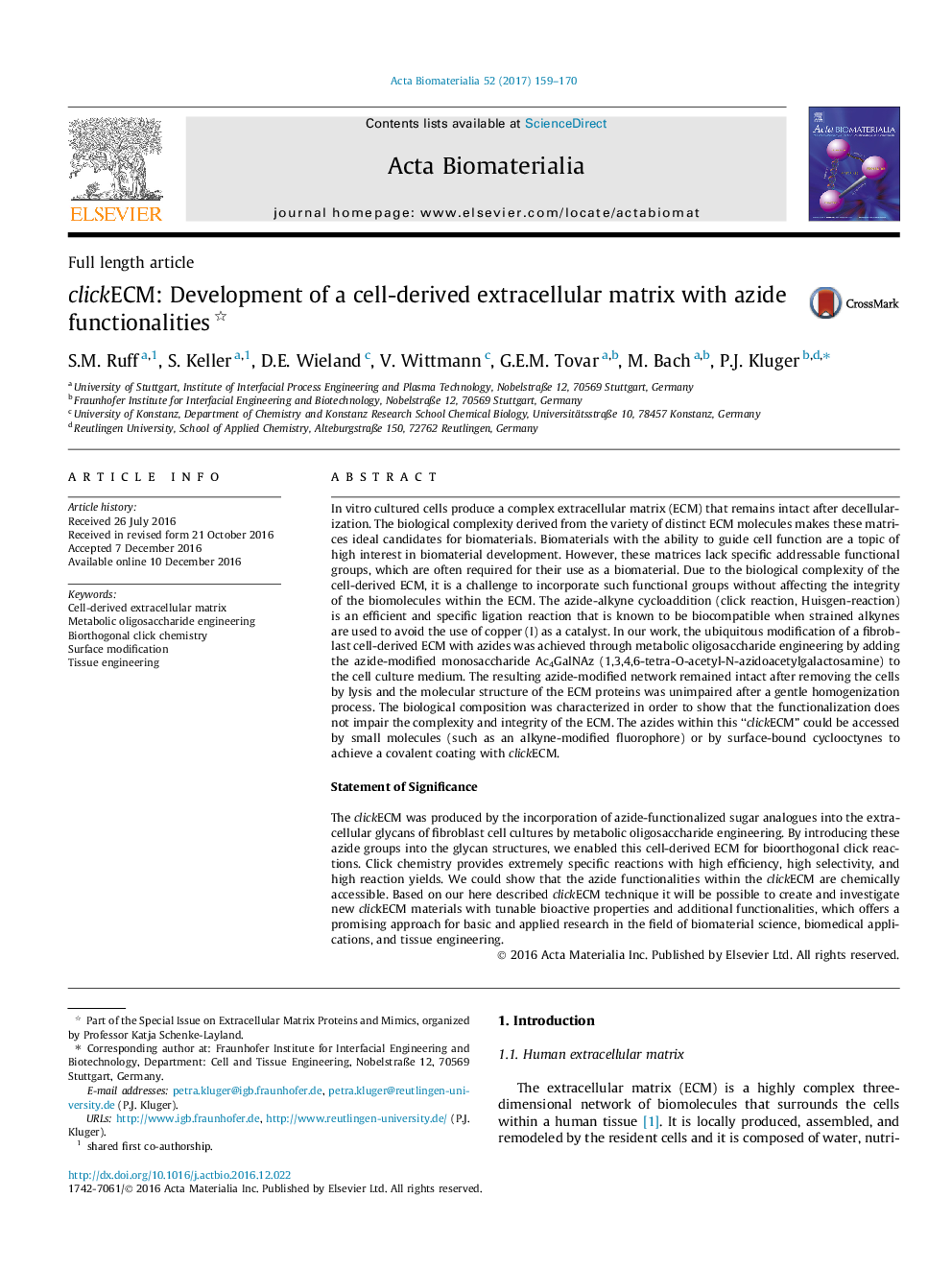| کد مقاله | کد نشریه | سال انتشار | مقاله انگلیسی | نسخه تمام متن |
|---|---|---|---|---|
| 6449664 | 1415934 | 2017 | 12 صفحه PDF | دانلود رایگان |

In vitro cultured cells produce a complex extracellular matrix (ECM) that remains intact after decellularization. The biological complexity derived from the variety of distinct ECM molecules makes these matrices ideal candidates for biomaterials. Biomaterials with the ability to guide cell function are a topic of high interest in biomaterial development. However, these matrices lack specific addressable functional groups, which are often required for their use as a biomaterial. Due to the biological complexity of the cell-derived ECM, it is a challenge to incorporate such functional groups without affecting the integrity of the biomolecules within the ECM. The azide-alkyne cycloaddition (click reaction, Huisgen-reaction) is an efficient and specific ligation reaction that is known to be biocompatible when strained alkynes are used to avoid the use of copper (I) as a catalyst. In our work, the ubiquitous modification of a fibroblast cell-derived ECM with azides was achieved through metabolic oligosaccharide engineering by adding the azide-modified monosaccharide Ac4GalNAz (1,3,4,6-tetra-O-acetyl-N-azidoacetylgalactosamine) to the cell culture medium. The resulting azide-modified network remained intact after removing the cells by lysis and the molecular structure of the ECM proteins was unimpaired after a gentle homogenization process. The biological composition was characterized in order to show that the functionalization does not impair the complexity and integrity of the ECM. The azides within this “clickECM” could be accessed by small molecules (such as an alkyne-modified fluorophore) or by surface-bound cyclooctynes to achieve a covalent coating with clickECM.Statement of SignificanceThe clickECM was produced by the incorporation of azide-functionalized sugar analogues into the extracellular glycans of fibroblast cell cultures by metabolic oligosaccharide engineering. By introducing these azide groups into the glycan structures, we enabled this cell-derived ECM for bioorthogonal click reactions. Click chemistry provides extremely specific reactions with high efficiency, high selectivity, and high reaction yields. We could show that the azide functionalities within the clickECM are chemically accessible. Based on our here described clickECM technique it will be possible to create and investigate new clickECM materials with tunable bioactive properties and additional functionalities, which offers a promising approach for basic and applied research in the field of biomaterial science, biomedical applications, and tissue engineering.
120
Journal: Acta Biomaterialia - Volume 52, 1 April 2017, Pages 159-170